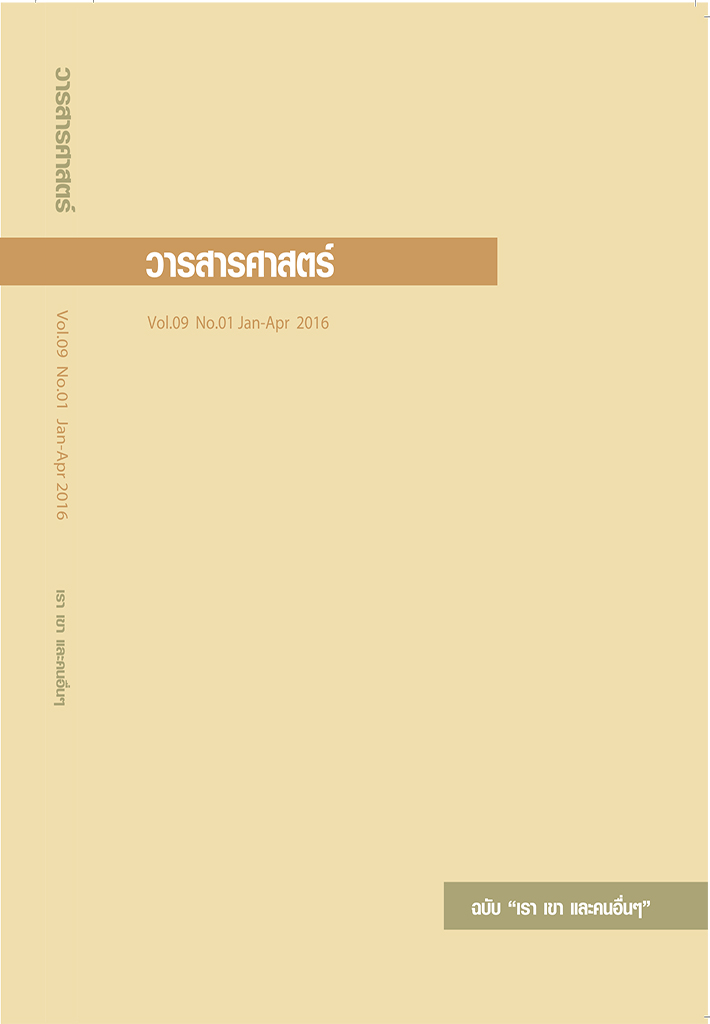เรื่องของ “ตัวตน” บนโลกของเว็บไซต์โซเชียลเน็ตเวิร์ก: ขอบเขตของ “ตัวตนที่ปรารถนา” และ “ตัวตนที่เป็นจริง”
บทคัดย่อ
A significant development in computer-mediated communication (CMC) introduces a new platform of articulation for people across social networks, which is so-called the social network site (SNS). Like other CMCs, SNSs have served as a stage not only for maintaining relationships but for self-presentation among social networkers as well. Indeed, it appears that individual’s self-presentation is correlated with the nature of each social context in which they exist at that time. In this case, SNSs are seen as a newly emerged “identifiable online environment” diverging from the old online context, “the anonymous setting”. The anonymity of the environment seems to affect the user’s self-presentation. They, therefore, reflect quite realistic and honest identity claim, even though they tend to “stretch the truth a bit” in order to build a desirable self. The increasing of social contacts and unknown audiences also leads more complicatedly towards identity formation. This article, thus, aims to examine and discuss the characteristics of selves depicted in SNSs as well as unique strategies that have been emerged and advanced overtime by its users so as to construct and present the selves as one pleases.








